Would you like to know what to do if a plant grows through your wall into your house? Well, we have researched this topic and have answers for you. Knowing what to do if a plant grows into your home is vital to avoid property damage.
If a plant is growing through your wall into your house, you need to kill and remove it from your home. Kill the plant by severing its connection with its roots, then pull the plant out of your wall. Some climber plants will need to be dead for several days before they release their grip and can be pulled out.
This article will discuss what to do if a plant grows through your wall into your house. We will also learn the answers to other interesting related questions, such as what plants are safe to plant next to a wall and how do you control climbing plants? Keep reading to learn more.

A Plant Is Growing Through My Wall Into House - What To Do?
If a plant is growing through your walls and into your house, you need to kill and remove the part that's trespassing. For most plants, all you need to do is cut the connection between the plant and the vine and pull the vine out of your walls.
There are, however, some species of climber plants that may be more challenging to remove. Climber plants use tendrils to hold tight to objects, and these tendrils will cling tightly to the inside of your walls, making pulling the plant out tricky.
One way to remove tricky climber plants is first to kill the part of the plant in your wall and wait a few days for the tendrils to dry and lose their strength. There are a few methods for killing climber plants in your walls, and they vary in effectiveness.
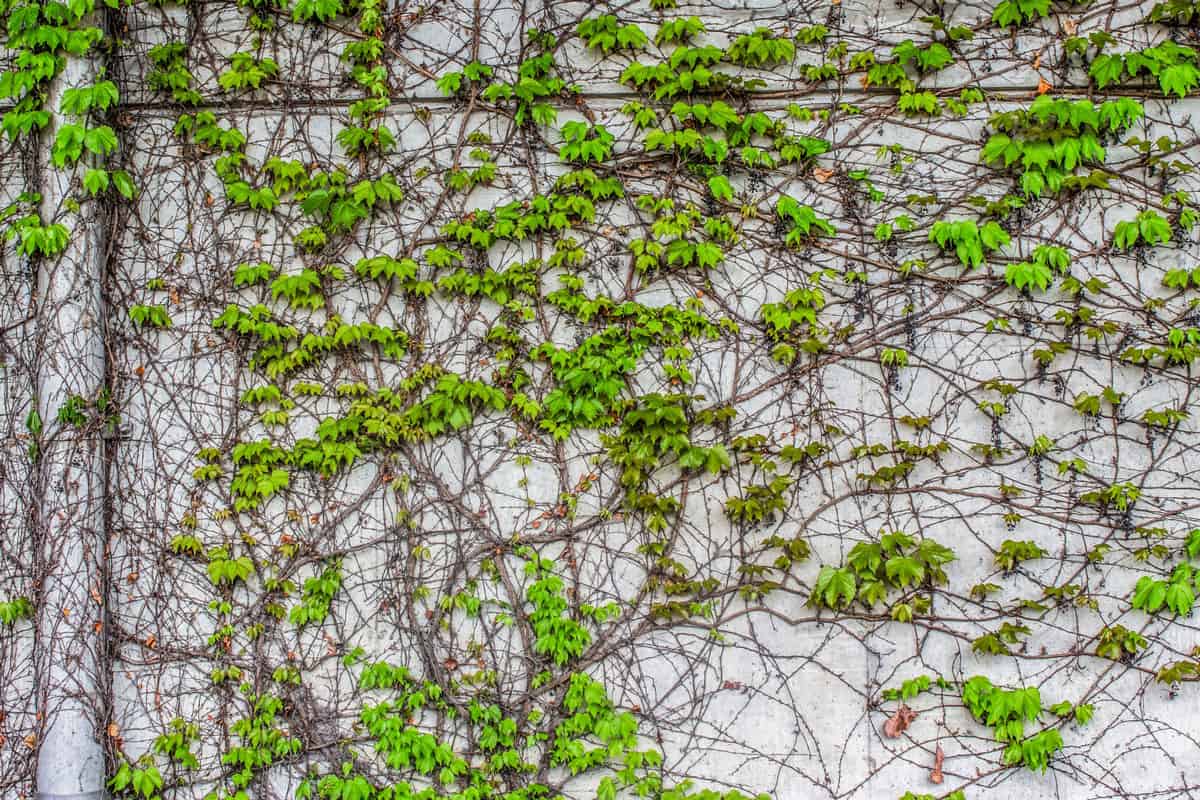
Killing The Plant
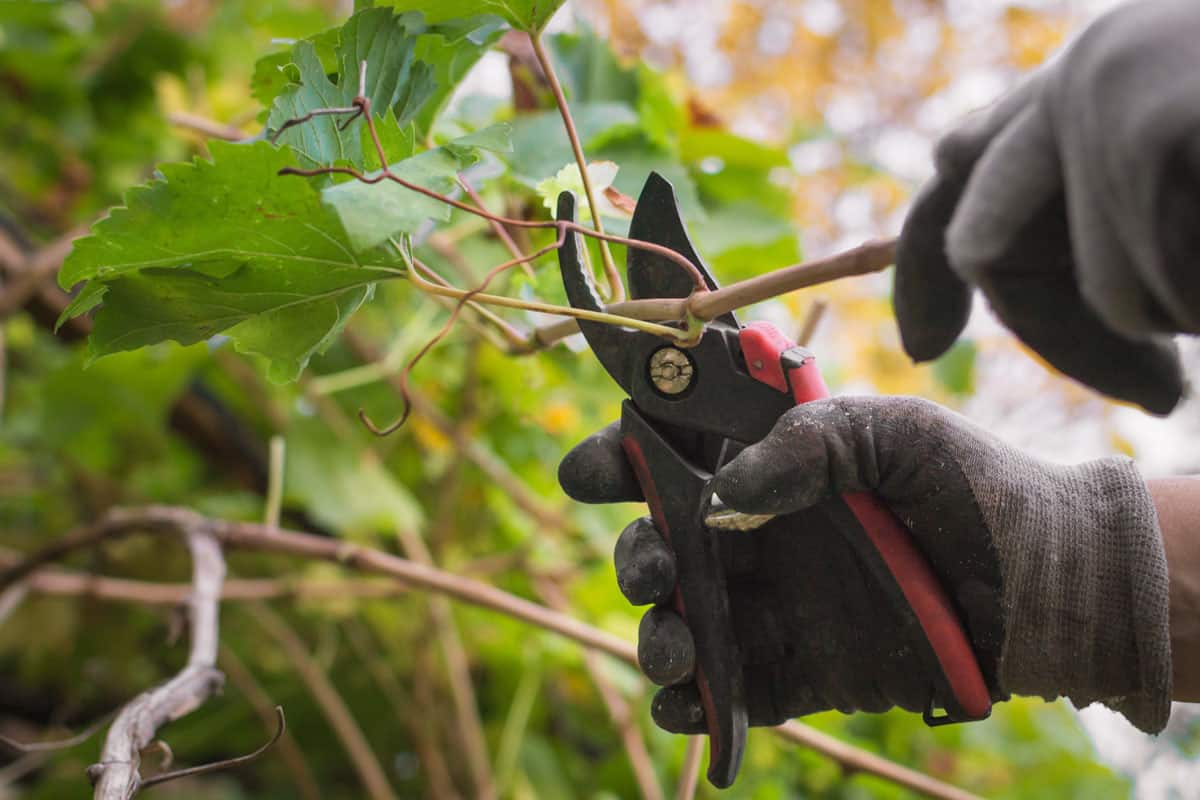
One method is to cut all the vines' connections to their roots. The cutting method is pretty effective, but if only a few plant stems are missed, then the mass of vines in your walls may still cling tight.
You can also try poisoning the climbing plants. If you spray a glyphosate-based poison, the plants' roots will die, and the entire length of the vine will die with it. One drawback to poisoning climbing plants is that the whole plant dies, not just the part in your walls.
Once you have killed the entire plant or the part intruding, try pulling it out of your walls. While wearing leather gloves, get a good grip on the base of the vines and start pulling.
It's best to pull in sharp jerks to help break apart the tendrils. It's okay if a small amount of vine material is left behind in your wall as long as the vine is dead.
You may also want to try using a pitchfork. A pitchfork can hook onto vines, and you can use the handle as leverage to pull. Once you have removed all of the plants from your house, you are finished.
If the type of climbing plant in your walls is invasive, it's only a matter of time before it finds its way back. You must remove the invasive climbing plant to stop the problem entirely.
How Do You Remove A Climbing Plant?

If you have a climbing plant that needs to be removed, you will want to start by killing it. Take the central mass of vines and cut it at ground level. For more invasive climbing plants, you will now need to wait a few days for the plant's tendrils to weaken.
Once the plant is ready start pulling down its vines. You can use a pair of loppers to cut vines into small pieces to be picked up and thrown away. Once all the plant mass above the ground has been processed and thrown away, you can move on to removing the root mass.
Take a spade shovel and dig a hole around the central root mass about six inches from the base of the root mass encircling it. As you dig around the root mass, you will need to cut any anchor roots securing the root mass. As you cut roots, the root mass becomes easier to move.
Once enough roots are cut, you can lift the central root mass out of the ground. Dispose of the root mass and fill the hole will rocks and soil. Adding rocks to the dirt is crucial to keep the ground from sinking over time.
Next, pack down the soil where you filled the hole. You can use the handle of your shovel to compress the dirt. Once the ground is packed down, you are finished removing your climbing plant.
Which Climbing Plants Are Less Invasive?
While many climbing plants are invasive, some will climb but not damage a wall. Here is a list describing several climbing plants that are less invasive and can be planted next to a wall without damaging it.
American Wisteria
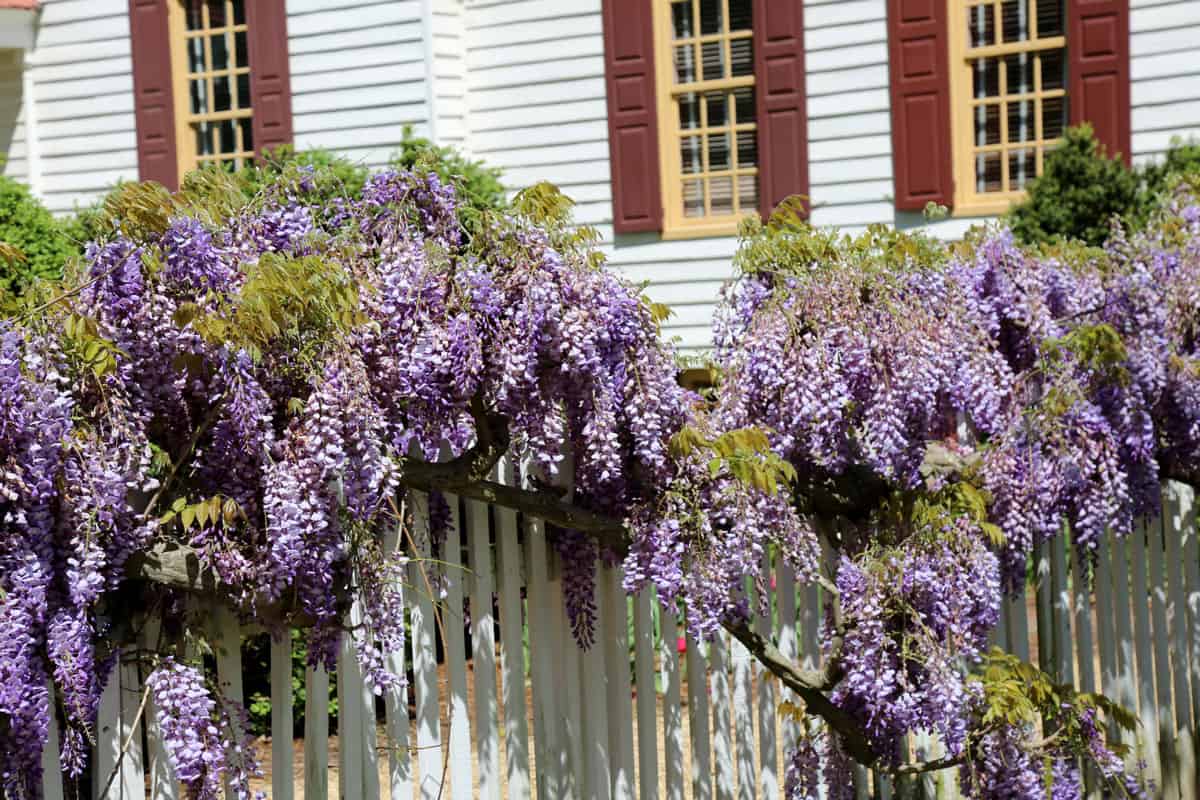
American wisteria is different than Asian varieties of wisteria by how aggressive it is. While some Asian types of wisteria may damage your house, American wisteria is gentler and easy to control.
These vines can grow 25 to 30 feet long and produces clusters of blueish purple flowers.
Butterfly Vine
Butterfly vine is a gentle vine that produces yellow flowers. These plants are so delicate you will need a trellis to get it to climb more than a few feet up walls.
Butterfly vine grows best in warmer climates and shouldn't be grown in hardness zones below eight.
Clematis

Clematises come in many different varieties and colors. Clematis vines can grow up a wall but don't stick too hard, making them easy to maintain with regular trimming.
You may find that clematises grow better when a trellis supports them.
Climbing Rose
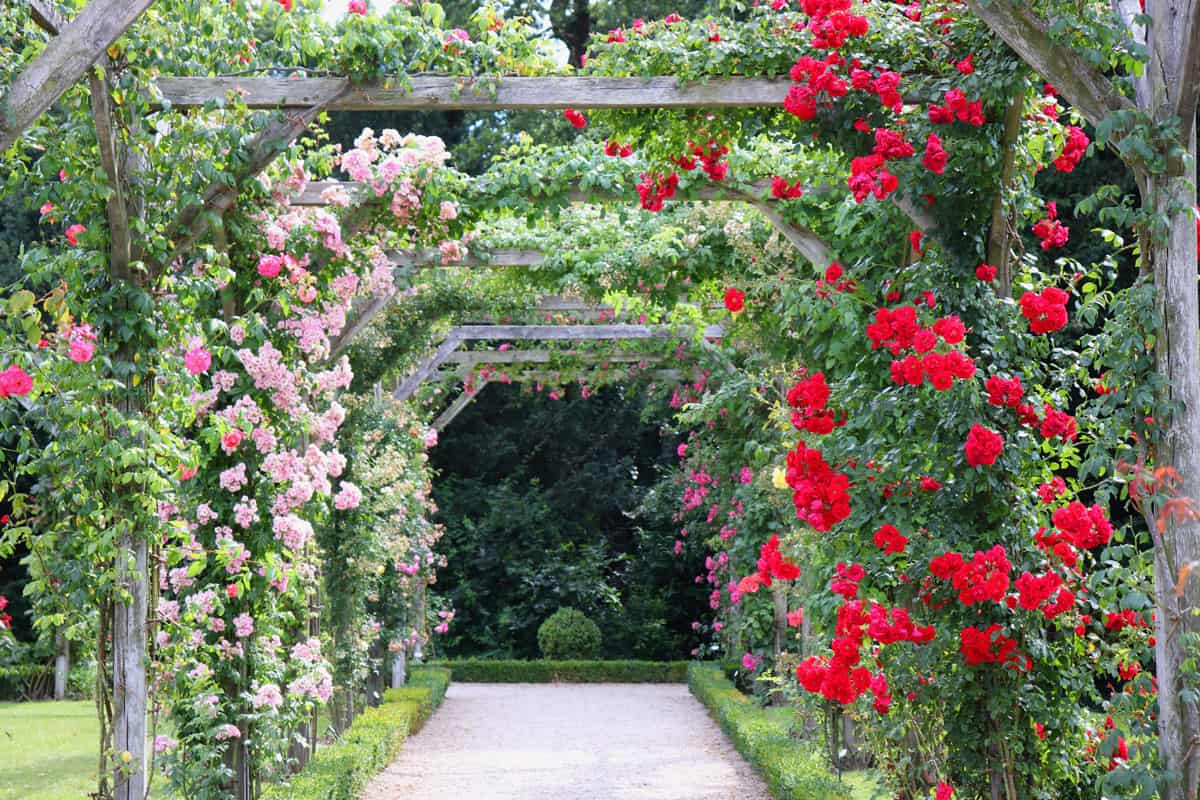
Climbing roses are a great way to add color to a wall without damaging it. Climbing roses can be sculpted into lovely shapes but won't cling too hard to a wall.
Since climbing roses don't hold to walls too hard, they need a trellis to support them. Climbing roses can grow a few feet tall without a trellis, but they require a trellis to reach their full potential.
Honeysuckle
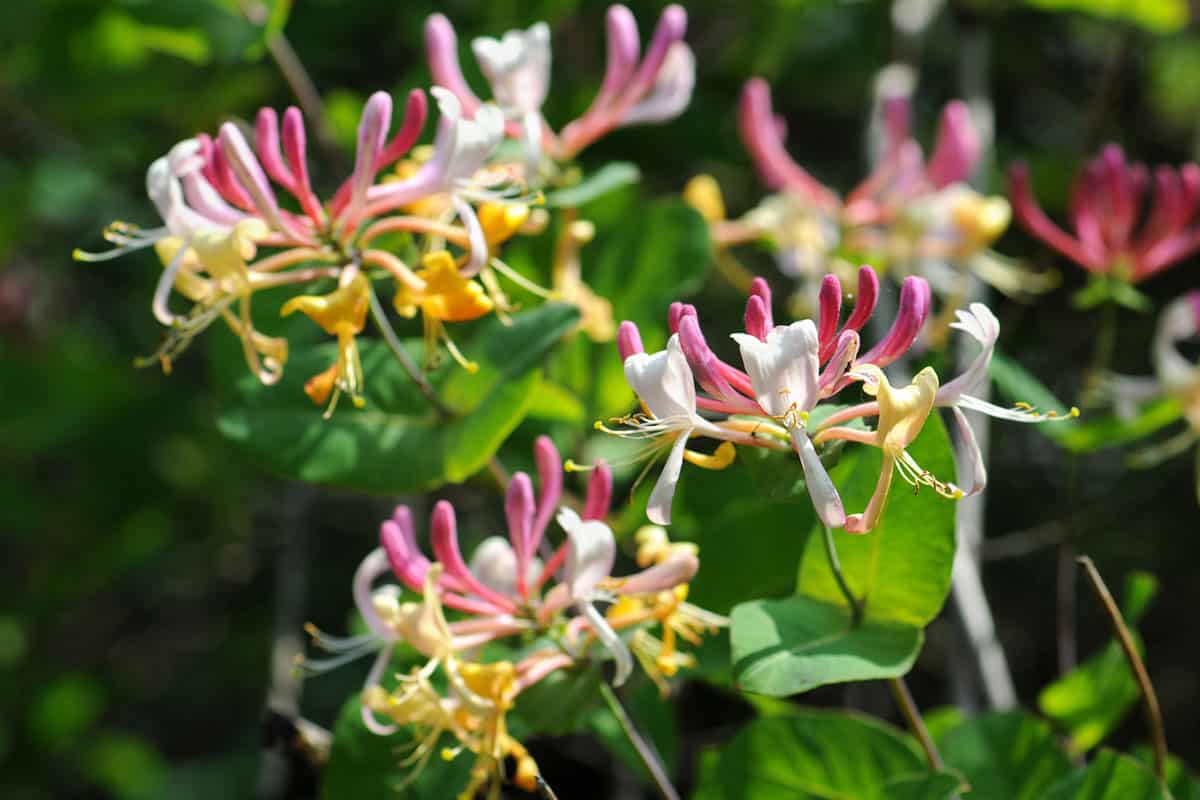
Honeysuckle is a climbing plant that is gentle and produces lovely flowers. These plants have dense leaves that easily cover a wall without damaging it.
Honeysuckles are also known for their fragrant smell. Try Honeysuckle for an easy-to-control, aromatic climbing plant.
Morning Glory
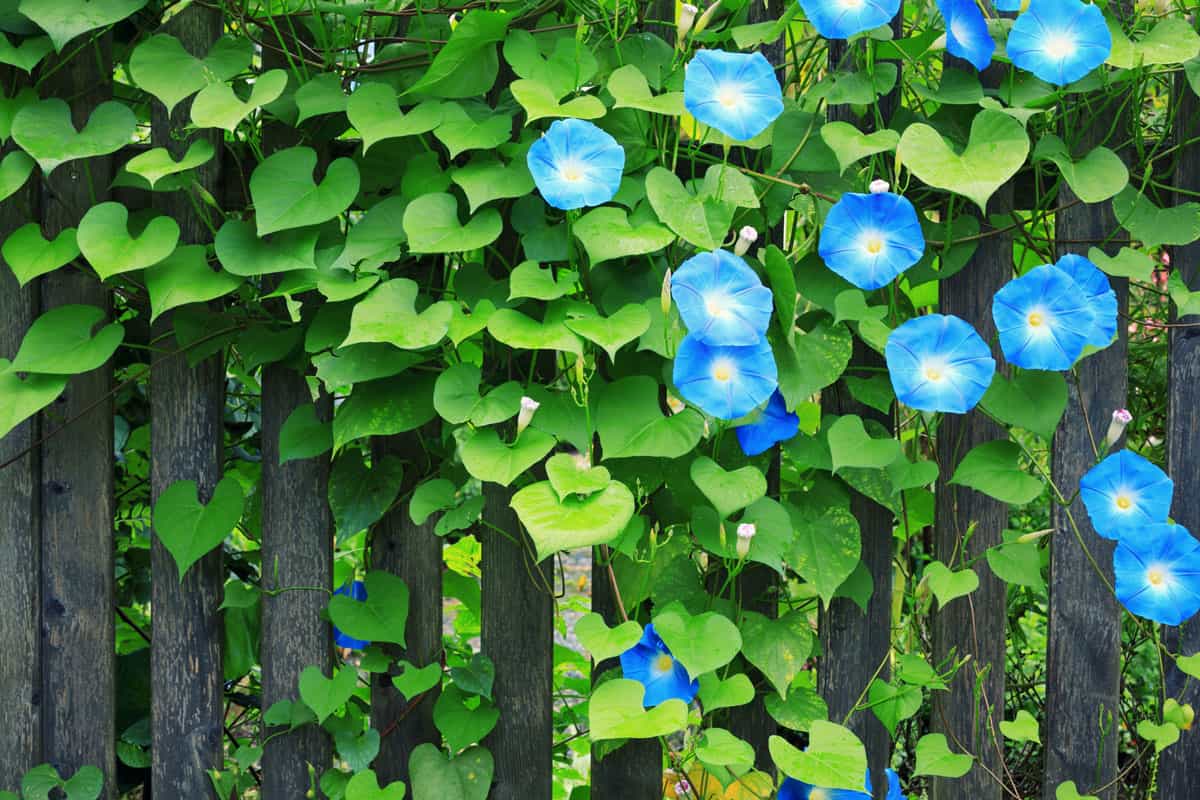
Morning glory is another climbing plant with many different flower colors. Morning glory can be invasive and spread but is too small to hurt your house.
You can plant morning glory as a beautiful climbing plant against your house.
How Do You Control Climbing Plants?
While you can plant a less invasive climbing plant species, many of the most popular species are invasive. To keep your climbing plants under control, you need to use a trellis and regular pruning.
A trellis can be used to guide climbing plants and keep them from growing where they aren't wanted. Place your trellis at least a foot away from walls you don't want your plant climbing on. Then, keep pruning any vines you see trying to grow out from the trellis.
When your climbing plant is young and still being established, train it back onto the trellis instead of pruning all of the outgrowths. You can train climbing plants by manually taking the vines and weaving them onto your trellis.
Training climbing vines as they grow is vital because once they become more prominent, they will be more challenging to train. Branches that can't be trained back onto the trellis must be pruned.
How Do You Prune Climbing Plants?
You will need a pair of hand pruners and loppers to prune climbing plants. Use the loppers to cut branches that can't be trained back onto the trellis. You may also need a ladder to reach higher-up branches.
Once you have cut all the larger branches, use the hand pruners to clean up any small vines that wander too far from the main plant. Many vines can be retrained back into the plant, but others hang too far from the plant and need to be removed.
It will take weekly pruning to keep most climbing plants looking lovely. Part of pruning is repetition. Since plants are dynamic, you need to keep cutting and making adjustments to keep them healthy and happy.
Final Thoughts

In this article, we learned that if a plant grows into your house, you need to kill and remove it. We also learned the proper way to remove a climbing plant. Remember, while most species of climbing plants are invasive, some aren't.
We hope you enjoyed this article. If you want to learn more, check out some of these other posts:
